M
I
C
R
O
S
T
O
R
Y
O
F
A
R
T
........................................................

NOW COMPLETED:

........................................................
MICROSTORY OF ART
ONLINE JOURNAL FOR ART, CONNOISSEURSHIP
AND CULTURAL JOURNALISM
........................................................
INDEX | PINBOARD | MICROSTORIES |
FEATURES | SPECIAL EDITIONS |
HISTORY AND THEORY OF ATTRIBUTION |
ETHNOGRAPHY OF CONNOISSEURSHIP |
SEARCH

........................................................



 >MICROSTORIES
>MICROSTORIES
- Richard Serra
- Martin Scorsese
- Claude Simon
- Sunshine
- Werner Herzog
- The Creation
- Marcel Duchamp
- Nino Rota
- Wölfflin and Woolf
- Hansjörg Schneider
- Kraftort Arkadien
- Visual Biography
- Schlaraffenleben
- Die Geisteswissenschaften
- The Voyeur
- Buzzword Sustainability
- Paul Verlaine
- Tao Yuanming
- New Beginning
- Seneca
- Still Lifes
- Charles Baudelaire
- Frédéric Chopin
- The Art History of Sustainability
- Wang Wei
- Solarpunk
- Historians of Light
- Lepanto
- Renaturalization
- Plates
- Snow in Provence
- Learning to See
- Picasso Dictionaries
- Peach Blossom Spring
- Picasso Tourism
- Tipping Points
- Sviatoslav Richter
- Weather Reports
- Treasure Hunt
- Another Snowscape in Picasso
- Picasso in 2023
- Dragon Veins
- The Gloomy Day
- The Art of the Pentimento
- Reforestation
- The Status of Painting
- Emergency Supply
- Punctuality
- Watching Traffic
- Zhong Kui
- How Painting Survived the 1990s
- Confirmation Bias
- Sustainability and Luxury
- Garage Bands
- Picasso and Artificial Intelligence
- Eyes of Tomorrow
- Picasso in 2023 2
- Gluing Oneself to Something
- Suburbia
- Bamboo
- Sustainability and Carpe Diem 1
- Interviews with Bruegel
- Sustainability and Carpe Diem 2
- Coffee & Sugar
- Bamboo 2
- Picasso in 2023 3
- Sustainability and Carpe Diem 3
- Cherry Orchard
- Old Magazines
- Chance
- Nick Drake
- Harlequin
- The Smartphone & the Art Book
- Atlas Syndrome
- The Kitchen
- Atlas Syndrome 2
- Consideration
- Tori Amos
- School
- Orchard Auctioning Day
- The Hundred Years’ War
- Sócrates
- Chameleon
- Nefertiti Bust
- Picasso as a Computer
- Sunflowers
- Philemon & Baucis
- Ode to the Radio
- Childhood
- Wimmelbild
- Restitution
- Nick Drake 2
- Wishful Thinking
- Sundays
- The Independent Scholar
- September
- The Fisherman by Pirosmani
- Microadventure
- Sociology
- Salvator Mundi
- Chillon
- Appassionata
- Amber
- Homer
- Berlin
- Planet Walk
- Improvisation
- Seeing Picasso
- These Nice Kids
- Robber
- The One
- The Sea Turtle
- Zoo
- Through the Hush
- Wunderkammer
- I Do Not Seek, I Find
- Shopping Mall
- Food Hamper
- The Secretary
- This Gate
- Nor Rainy Day
- House on a Hill
- Beautiful Island
- Second-hand Bookstore
- Flat
- Slap in the Face
- Serra, Wenkenpark
- Apologies
- The Bells
- Nordmann Fir
- Picasso Wanting To Be Poor
- Picasso, Pirosmani
- A Brief History of Sculpture
- 24 Sunsets
- Rusty Phoenix
- Glove
- Wintry Stanza
- A Song
- Like A Beatle
- Catching An Orange
- Solar Bees
- Permaculture

 >FEATURES
>FEATURES
- Van Gogh On Connoisseurship
- Two Museum’s Men
- Ende Pintrix and the City in Flames
- Titian, Leonardo and the Blue Hour
- The Man with the Golden Helmet: a documentation
- Un Jury d’admission à l’expertise
- Learning to See in Hitler’s Munich
- Leonardo da Vinci and Switzerland
- The Blue Hour Continued
- The Blue Hour in Louis Malle
- Kafka in the Blue Hour
- Blue Matisse
- Blue Hours of Hamburg and LA
- A Brief History of the Cranberry
- The Other Liberale in the House
- The Blue Hour in Raphael
- Who Did Invent the Blue Hour?
- Monet on Sustainability
- Velázquez and Sustainability
- The Blue Hour in Guillaume Apollinaire
- Van Gogh on Sustainability
- The Blue Hour in Marcel Proust
- Picasso and Sustainability
- The Contemporary Blue Hour
- The Blue Hour in 1492
- The Blue Hour in Hopper and Rothko
- Hopper and Sustainability
- The Blue Hour in Ecotopia
- The Hour Blue in Joan Mitchell
- Explaining the Twilight
- The Twilight of Thaw
- The Blue Hour in Pierre Bonnard
- Explaining the Twilight 2
- Picasso on Stalin
- Rubens on Sustainability
- The Salvator Mundi in Bruegel and Rubens
- The Blue Hour in Leonardo da Vinci and Poussin
- The Blue Hour in Rimbaud
- Faking the Dawn
- Frost and Thaw in Ilya Ehrenburg
- Picasso, Stalin, Beria
- Picasso, Solzhenitsyn and the Gulag
- Shostakovich on Picasso
- Hélène Parmelin in 1956
- Historians of Picasso Blue
- Picasso Travelling to Moscow 1
- The Blue Hour in Caravaggio
- Picasso Travelling to Moscow 2
- Picasso, the Knife Game and the Unsettling in Art
- Some Notes on Leonardo da Vinci and Slavery
- Picasso Moving to the Swiss Goldcoast
- The Blue Hour in Camus
- The Blue Hour in Symbolism and Surrealism
- Caspar David Friedrich in His Element
- Exhibiting the Northern Light
- Caspar David Friedrich in His Element 2
- Robert Schumann and the History of the Nocturne
- The Blue Hour in Robert Schumann
- Caspar David Friedrich and Sustainability
- The Twilight of Thaw 2
- Multicultural Twilight
- The Blue Hour in Anton Chekhov
- The Blue Hour in Medieval Art
- Twilight Photography
- The Blue Hour in Bob Dylan
- Iconography of Optimism

 >SPECIAL EDITIONS
>SPECIAL EDITIONS
- Visions of Cosmopolis
- Mona Lisa Landscapes
- Turner and Ruskin at Rheinfelden
- Painters On TV & On TV
- Spazzacamini in Art
- A Last Glance at Le Jardin de Daubigny
- The Experimental Cicerone
- A Dictionary of Imaginary Art Historical Works
- Iconography of Blogging
- Begegnung auf dem Münsterplatz
- Cecom
- Das Projekt Visual Apprenticeship
- Those Who See More
- A Fox on Seeing with the Heart
- Sammlung Werner Weisbach
- Daubigny Revisited
- Some Salvator Mundi Microstories
- Some Salvator Mundi Afterthougths
- Some Salvator Mundi Variations
- Some Salvator Mundi Revisions
- A Salvator Mundi Questionnaire
- A Salvator Mundi Puzzle
- Unknown Melzi
- Francis I and the Crown of Charlemagne
- From Amboise to Fontainebleau
- Drones Above Chambord
- Looking Back At Conques
- Flaubert At Fontainebleau
- Images of Imperial Ideology
- The Chronicles of Santa Maria delle Grazie
- Seeing Right Through Someone
- Melzi the Secretary
- Eying Glass
- A Foil to the Mona Lisa
- A Renaissance of the Cartoon
- Sketching a Family Tree
- Venetian Variations
- A Brief History of Digital Restoring
- A Consortium of Painters
- Leonardeschi and Landscape
- A Christ in Profile
- Learning to See in Spanish Milan
- A History of Gestures
- Leonardo and Josquin
- A Renaissance of the Hybrid
- Suida and Heydenreich
- The Watershed
- Three Veils
- From Beginning to End
- Connoisseurship of AI
- Twilight and Enlightenment
- The Blue Hour in Chinese Painting
- Dusk and Dawn at La Californie
- Iconography of Sustainability
- The Blue Hour in Goethe and Stendhal
- The Sky in Verlaine
- The Blue Hour in Paul Klee
- Iconography of Sustainability 2
- The Blue Hour in Charles Baudelaire
- From Bruegel to Solarpunk
- Some Salvator Mundi Documentaries
- Some More Salvator Mundi Monkey Business
- The Windsor Sleeve
- Brigitte Bardot’s Encounter with Picasso
- Art Historians and Historians
- A Salvator Mundi Chronicle
- The Salvator Mundi and the French Revolution
- The Fontainebleau Group
- The Encounter of Harry Truman with Pablo Picasso
- The Fontainebleau Group Continued
- The Windsor Sleeve Continued
- The Salvator Mundi in Early Netherlandish Painting 1
- Some Salvator Mundi Resources
- A New Salvator Mundi Questionnaire
- The Woman in Picasso
- The Yarborough Group
- Melzi, Figino and the Mona Lisa
- The Yarborough Group Continued
- A Salvator Mundi Global History
- The Salvator Mundi in Medieval Art
- The Salvator Mundi in Medieval Art 2
- The Salvator Mundi in Early Netherlandish Painting 2


 >HISTORY AND THEORY OF ATTRIBUTION
>HISTORY AND THEORY OF ATTRIBUTION
- The Mysterious »Donna Laura Minghetti-Leonardo«
- Assorted Demons of Connoisseurship
- Panofsky Meets Morelli
- Discovering the Eye of Sherlock Holmes
- Handling the Left-handed Hatchings Argument
- Visual History of Connoisseurship
- Alexander Perrig
- Connoisseurship in 2666
- What Postmodernity Has Done to Connoisseurship
- Dividing Four Fab Hands
- A Leonardesque Ambassador
- Test Cases in Connoisseurship
- A Raphael Expertise
- How to Tell Titian from Giorgione
- Louise Richter
- The Unique Property in the History of Connoisseurship
- An Expertise by Berenson
- The Book of Expertises
- An Album of Expertises
- An Expertise by Friedländer
- A Salvator Mundi Provenance
- How to Tell Leonardo from Luini
- An Expertise by Crowe and Cavalcaselle
- An Expertise by Bayersdorfer
- An Expertise by Hermann Voss
- An Expertise by Hofstede de Groot
- Leonardeschi Gold Rush
- An Unknown »Vermeer«
- An Expertise by Roberto Longhi
- An Expertise by Federico Zeri
- A Salvator Mundi Geography
- A Salvator Mundi Atlas
- The Bias of Superficiality
- 32 Ways of Looking at a Puzzle
- James Cahill versus Zhang Daqian
- Five Fallacies in Attribution
- On Why Art History Cannot Be Outsourced to Art Dealers
- On Why Artificial Intelligence Has No Place in Connoisseurship
- Salvator Mundi Scholarship in 2016
- Leonardo da Vinci at the Courts
- The Story of the Lost Axe
- The Last Bruegel
- A Titian Questionnaire
- On Where and Why the Salvator Mundi Authentication Did Fail
- The Problem of Deattribution

 >ETHNOGRAPHY OF CONNOISSEURSHIP
>ETHNOGRAPHY OF CONNOISSEURSHIP
MICROSTORY OF ART
ONLINE JOURNAL FOR ART, CONNOISSEURSHIP
AND CULTURAL JOURNALISM
........................................................

***
ARCHIVE AND FURTHER PROJECTS

1) PRINT


***
2) E-PRODUCTIONS


........................................................

........................................................

........................................................
FORTHCOMING:


***
3) VARIA

........................................................

........................................................

........................................................

........................................................

........................................................
***
THE GIOVANNI MORELLI MONOGRAPH

- The Giovanni Morelli Monograph
........................................................
MICROSTORY OF ART
ONLINE JOURNAL FOR ART, CONNOISSEURSHIP AND CULTURAL JOURNALISM
HOME
MICROSTORY OF ART ONLINE JOURNAL FOR ART, CONNOISSEURSHIP AND CULTURAL JOURNALISM  A Renaissance of the Hybrid |
See also the episodes 1 to 23 of our New Salvator Mundi History:
Francis I and the Crown of Charlemagne
The Chronicles of Santa Maria delle Grazie
A Brief History of Digital Restoring
Learning to See in Spanish Milan
And:
A Renaissance of the Hybrid
(12.10.2021) Leonardo, in his notes on painting, transmitted by the ›Book on Painting‹ or by other manuscripts, speaks
about many things, as for example the question how to depict, convincingly, hybrid animals. But he remains also silent,
very silent, as to many other questions. What does he say, for example, about the commercial aspects of painting, or the
legal ones? What does he say about copyright? What does he say about cooperation between two or more workshops, or
between two or more artists? What does he say – and this would be most important indeed – about the cooperation of master
and pupil in a painting? About division of labour? About possible conflict, and about how to avoid it?
Brief: He does not seem to say much. Actually nothing at all. But is there indeed complete silence? It is a telling
silence? Yes, I think that it is, and I am going to show it in this 24. episode of our New Salvator Mundi History. Because, as said,
Leonardo knew the concept of hybridity, and he did ask the question of how to have appear hybridity naturally and
therefore convincingly. And he was involved, during his whole career as a painter, in projects to which also other people
did contribute, therefore hybrid projects, and he was involved in conflict, as he must also have thought about how to
solve it (by mediation). Leonardo, brief, knew very well what hybridity and division of labour was, only he does not
speak about it. And this, in my view, is telling.
One) Another Look at the Musician
Was the Musician painted by Leonardo da Vinci? Was the portrait painted by Leonardo only?
These are legitimate questions. But it also seems to me that a fresh look at the Musician is necessary, and that we need
to raise some additional, some other, some alternative questions. For example: Was the Musician painted by Josquin
des Prez? Was it painted (or thought out) by a collective? Did other minds than Leonardo contribute to the design?
By which I mean: Circumstances in Sforza Milan actually should force the scholar not to be as narrow-minded as a curator
wanting an autograph picture and defending a supposed autograph picture at any price. And Leonardo might also be
responsible for that picture, or partly responsible, if he never touched it. And Josquin might be responsible, even if he
is not the depicted young man, or the piece of music on the sheet of music is not by him. Because in Sforza Milan, at the
time of Ludovico Sforza and especially before that time, we see two workshops in close contact, the workshop of Ambrogio
de Predis, closer to the court than Leonardo was initially, and the workshop of Leonardo. And if Ambrogio de Predis and
Leonardo knew Josquin, as everyone seems to assume, why not imagining that the two workshops plus Josquin might have
discussed about how to represent music in the pictorial arts?
I don’t think, frankly, that Leonardo did paint much of the Musician himself, although I am agreeing, for example,
with the interpretation of Pietro C. Marani, and of the view that this is a psychologically subtle and well thought out
portrait (for my interpretation see the last episode). But I can agree to that interpretation without assuming that
Leonardo was responsible for the awkwardly modelled face (the left eye of the man seems to be too large, in my view; and
compared with the Virgin of the Rocks, for example, the portrait is awkward).
What I am assuming is, that Leonardo, at best, contributed the hand with the sheet of music, although or just because he
was not a born painter of hands (look at how his painting of hands does develop rather dramatically in his oeuvre). But
also that Leonardo, concerning my assumed discussion between two workshops – and perhaps involving even Josquin (or other
musicians) – Leonardo might have had a major role. And it seems to me that this picture was the result of such
discussion, and also of an attempt of Leonardo to show the Ambrogio workshop how to paint. I don’t think, frankly, that
Leonardo himself painted the face (or much of it), and I don’t think that Leonardo necessarily painted the hair. It just
seems, to me, to be the result of Leonardo showing or explaining someone how to do it, while the result is not of the highest
quality, as it would have been, if Leonardo had done, and especially finished it himself carefully.
In one word: the Musician seems, to me, to be a classic hybrid. Another hybrid, the epitome of hybrid, and this is what this
episode is about: the hybrid. Or more abstract: hybridity. Something that is made of diverse ingredients and put
together. Something to which many parties might have contributed. And we can assume that the Ambrogio workshop and the
Leonardo workshop were in a dialogue as to the question how to represent music – because also the Virgin of the Rocks
project was about this question. The Virgin of the Rocks, if we look at the commission, and not only at the central
panel (perhaps done by Leonardo alone), was another hybrid: the two angels playing musical instruments were not painted
by Leonardo, but still they were part of the project.



Two) The Non-Hybrid as the Exception or The Musician in Context
While we are looking at the reconstruction of the Virgin of the Rocks altar above (picture: Crijam), we might also
raise the question if the hybrid is rather the norm in Leonardo or the exeption. His career started with contributions to
works by Verrocchio, thus classic hybrid works of art.
What is striking it that, in the Leonardo world, and also in large parts of Leonardo scholarship, it is either about the
worshipped unique original, or about the more or less irrelevant copy. A classic dichotomy – of purity. But why is there
not more of a dialectical or synthetic thinking, asking if not the whole of the classic oeuvre catalogue, by which I
mean, the nine or fifteen (or whatever number) of works that are considered as being autograph: is not the oeuvre
itself a hybrid? Do we really know beyond reasonable doubt that the core of the catalogue is really pure Leonardo? Isn’t
the whole oeuvre catalogue itself, in truth, a hybrid, with few pictures being exceptionally pure Leonardo, but with the
large marjority being hybrids in the one or other sense?
Jan Sammer, an exceptionally committed Leonardo scholar, specializing in the late French period of Leonardo, has
attempted to identify all pictures that, after the death of Leonardo, are to be found in Salaì’s posession, having been
divided probably, finally, between the two sisters of Salaì (see Sammer 2019). I think that Jan Sammer – with his
admirable verve – (and also Laure Fagnart) are among the best of today’s Leonardo scholars and deserve all praise, but I
have to ask: why is the whole Salaì cluster, again, either a pure autograph cluster or a pure cluster of copies (or Salaì
pictures). Why has it to be the one or the other, why not, again, something mixed? Another hybrid cluster, of various
kinds of hybrids (and perhaps also something pure). What was left in the Leonardo workshop might have been unsold
workshop repetition, but perhaps also study pictures, results of pupil’s attempting to learn something, with Leonardo
helping and so on. And judging by the lack of discernment in Leonardo and Leonardeschi studies today – did contemporaries
really know this better? If we are thinking back of the last episodes, with contemporaries of Josquin being confused by
Josquin works and works by Josquin followers. And was Leonardo himself guilty or not guilty as far as this whole
confusion is concerned. Was his silence as to division of labour not a telling one?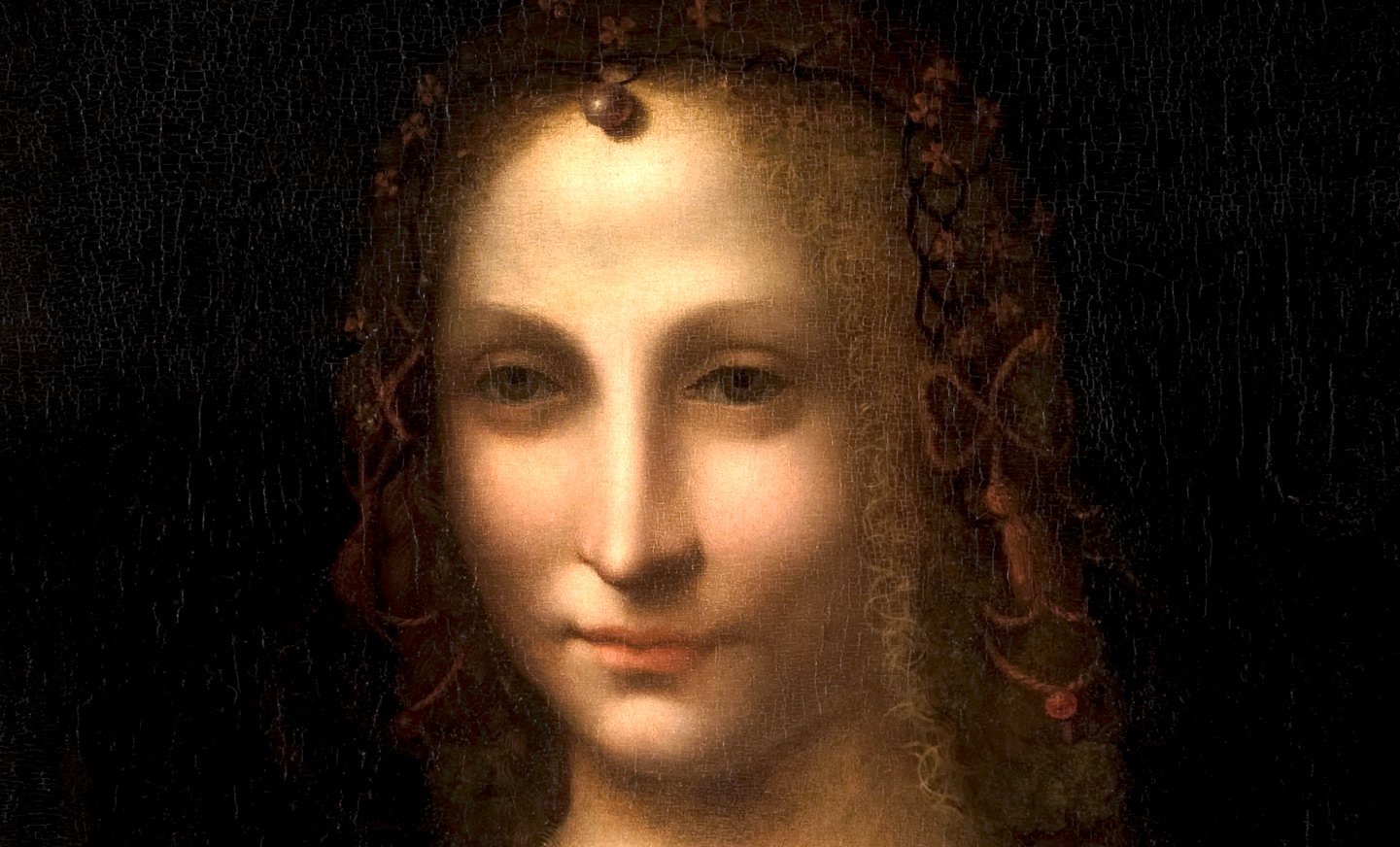
Three) The Musician and the Columbia Portrait of a Noblewoman
The Musician, if compared with the Portrait of a Young Man by Petrus Christus, shown in the last episode, looks
rather awkward. But also if compared with the face of the Columbia museum’s Portrait of a Noblewoman the Musician
looks awkward. I am not willing to see the portraitist Boltraffio in the Columbia picture. To me that face is,
hypothetically as always, of course, but it is pure Leonardo, bearing comparison with the Ginevra de’ Benci, even
if no-one is ready to agree with me (or if I would be accused of manipulating it, due to my enhancing of the photo’s
exposure rate, to make the face and hair more readable as far the modelling of lighter and dark parts is concerned).
The rest of the picture, the bust, does not bear comparison with finished works of Leonardo. In my view the Columbia
portrait was finished by someone else, after Leonardo had painted the face, and after the Sforza downfall in 1500. It is
a portrait coming from the Sforza period, but finished, in some sense finished, only after 1500. By whom, I do not know,
but we would have various candidates.


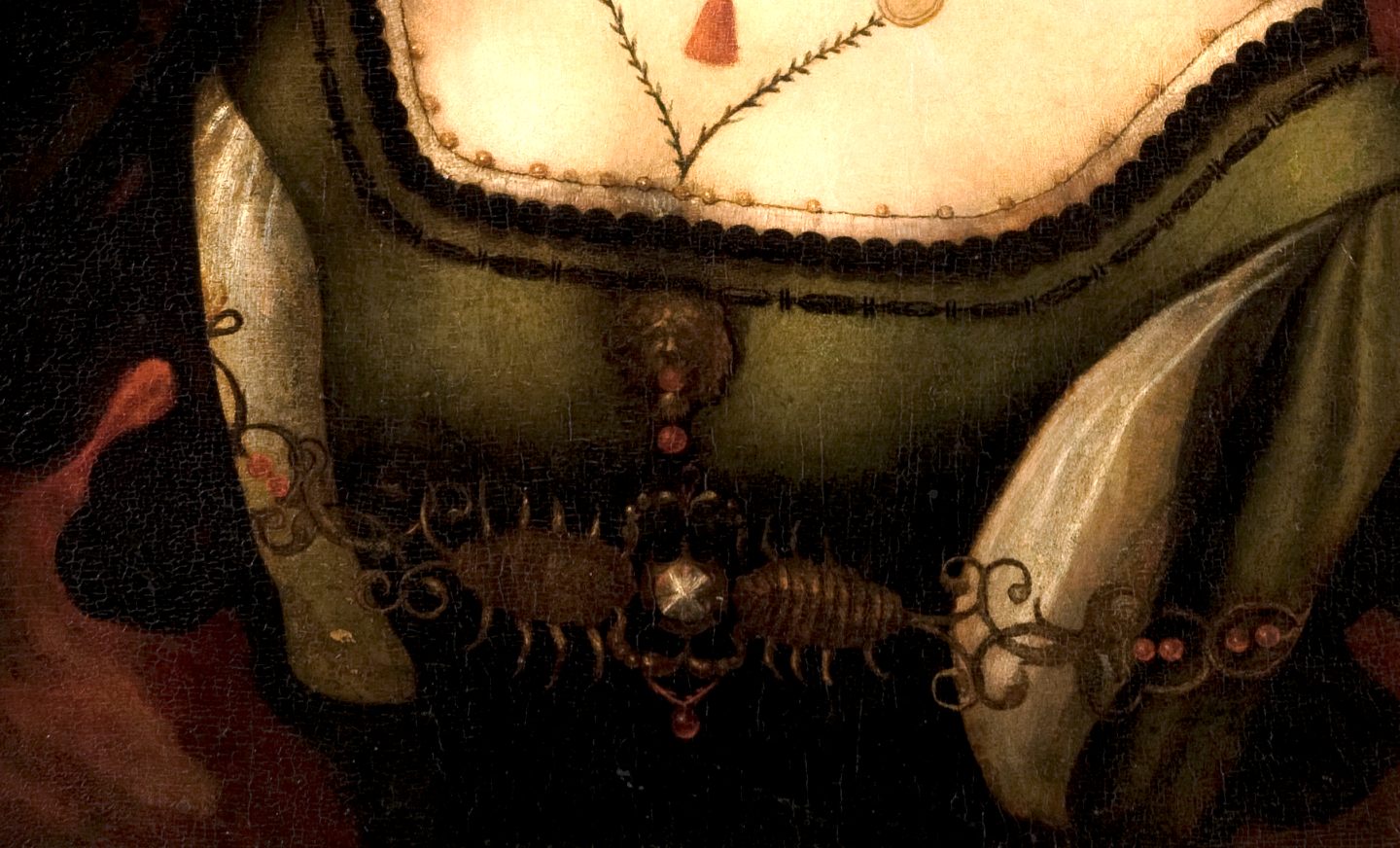
Also the Columbia portrait, thus, is a hybrid. Highlighting one detail might make this more clear: we see a sort of
embellishment of the dress – on that dress, an embellishement structure that reminding of grotteschi motifs, but
looking from right to left it is not that clear, if this embellishment is actually a structure on that dress itself,
i.e. directly applied on the textile, or literally even – or only – painted or drawn on that textile, or it is meant to
be seen as a structure of its own, that could be removed from that dress like a chain. Chain or embroidery? Such
ambivalence does show that here, here was no decided verve to make that picture readable. It is carelessness that results
with a visual ambiguity that shows here, while application or adding of lustre can be seen as well, indicating a will to
accomplishment. And some parts of the jewellery in that picture is of the highest quality. But not the dress, not the
bust, which, if it may be allowed, does not bear comparison with the face. This all makes me say, these observations are
the reason to call that picture a hybrid. And an attribution to Leonardo could only be misundertood. First it had to be
made clear what a hybrid is. Then it had to be made clear how this picture and its history can be read (see the
respective episode for that), and then, and only then it could be said: yes, it has to be included in a Leonardo da Vinci
oeuvre catalogue, because it is likely that Leonardo painted the most central part of that picture – the face of the
noblewoman, and he did paint it – in terms of a mask, but he did paint it. And here I am willing to consider that this
face might be ›pure Leonardo‹. As well as the most accomplished one pearl might be, indicating that Leonardo, here, might
have demonstrated to a pupil how this was done, but leaving the pupil handle the rest. Thus we would have a historical
setting that – for the sake of pupil’s instruction – Leonardo finished, with a pupil, the painting of a Sforza court
noblewoman, which had been begun in the Sforza period, but had been left unfinished due to the Sforza downfall (or for
other reasons).
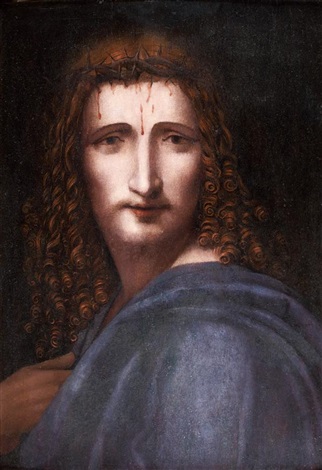
Four) The Musician and the Salvator Mundi
Above I have evoked an imagined discussion between two workshops – and possibly a musician, a composer like Josquin des
Prez. And also as to the Salvator Mundi, in the first five episodes of this history, I have evoked a historical
setting: Leonardo, Melzi and (from time to time) Salaì at Amboise, with Louise of Savoy, Marguerite of Navarre, painters
like the Cloet brothers, and (from time to time) Francis I, the French king.
Due to the Christ with Crown of Thorns (above right) that passed as ›Follower of Luini‹, but that, hypothetically, I am attributing
to Salaì, I am willing to concede, again hypothetically, more of Salaì contribution to the Salvator Mundi version
Cook (especially as to the hair, but also to the folds), which, still, I am considering to be as a Melzi-Leonardo-Salaì
hybrid. Knowing that others, namely Jacques Franck, seem to prefer Salaì as the main author, and again looking at the
Christ with Crown of Thorns (a smaller picture), and comparing it to the Salvator Mundi, I must say that: yes,
Salaì must be ›in the picture‹, i.e. we have to seriously consider his participation if we want to be serious scholars,
and if the Salvator Mundi case would be just a normal (more or less) rational scholarly debate, the Christ with
Crown of Thorns would have been in discussion, as a key picture, from (almost) the very beginning, since it turned up
only a little later – with the Salvator Mundi frenzy already having started.
Thinking about the Musician does help us to think about the Salvator Mundi. And the concept of hybridity, to me,
seems to be the key concept of being able to understand both pictures. Genius cult, cult of names, the idea of purity
(all reminding of relic cult) does distort the picture, and both pictures remain as interesting, as works of art, as they
are. The historical setting, or our imagination of such setting, even does make the pictures more interesting, because we
can try to see with our eyes, but also try to see through the eyes of others, of contemporaries, as far this is possible
(but it is possible, as far history is possible, the writing of history is possible, and to exactly that degree it is
possible here). The Salvator Mundi version Cook is a hybrid. Period. Not just another hybrid. Perhaps the epitome of
hybrid. And hence, deservedly, the most famous hybrid of all. But it is a hybrid. A hybrid anyway, but also a hybrid,
because a green background layer once was applied, and since it was retouched (perhaps because people did not like Salaì
directness, hence due to later iconoclasm), thus since it was retouched later. And restored: last but not least this
final restoration process contributed to it being a hybrid – since the idea of the picture having been a pure Leonardo
was, as one might say, ›injected‹ to the picture. But it was a hybrid before. Long before. And even possibly before
Leonardo had retouched it, adding the hand, and perhaps adding parts of the orb, as well as possibly some lustre.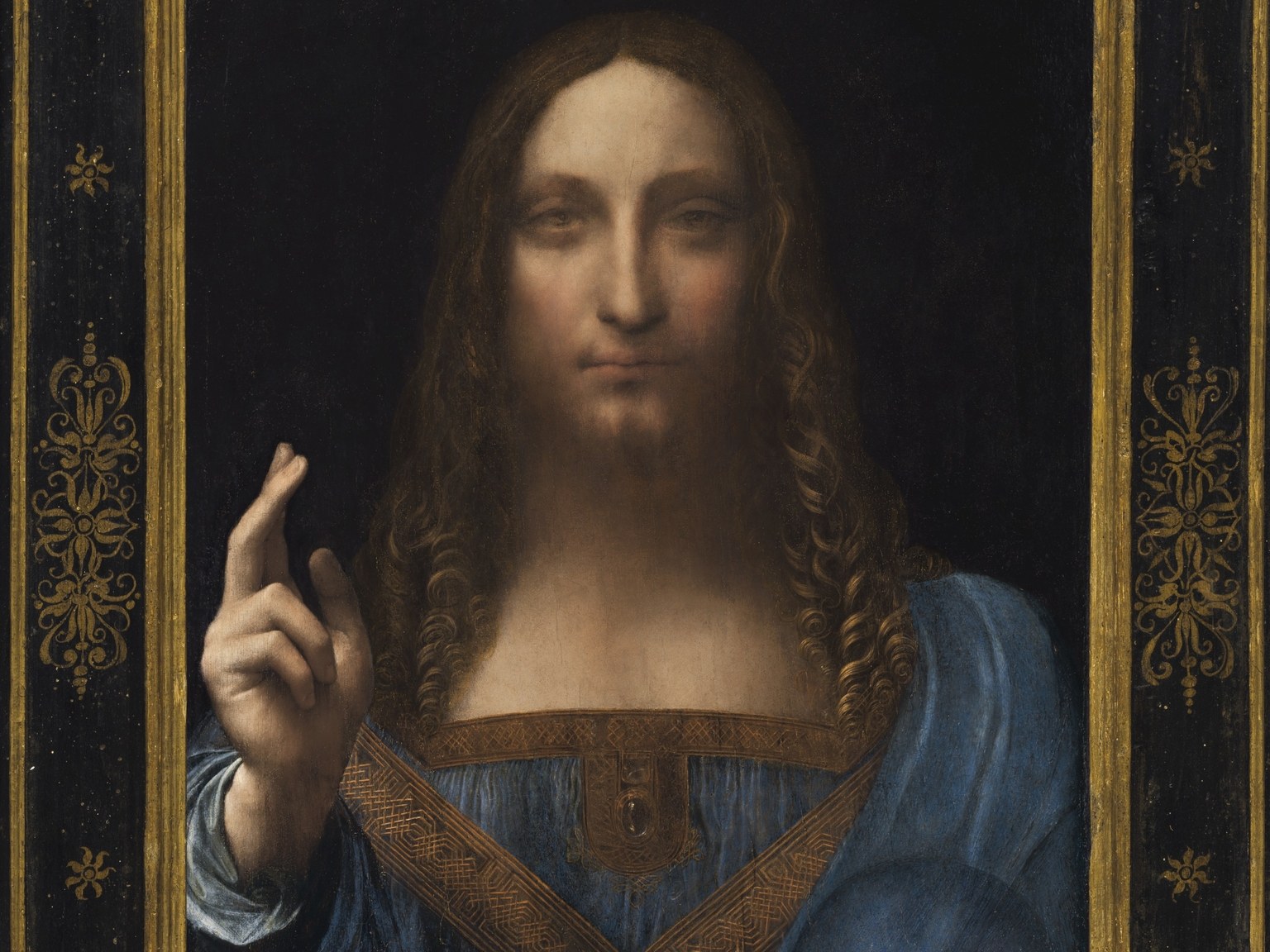


Five) Conclusions
Looking back on this episode and on the last, I have to say that, all we, all Leonardo scholarship has to do, is to take
as a model the way Willem Elders has been writing on issues of authenticity in Josquin. And more than that: musicology
might serve as a model in general, because it has to do with abstract structures, and this abstraction is helpful. If you
see something that reminds you something, it is not necessarily a causality between the two things that explains it. It
can be more complicated, with indirect relations being at play. And the patterns we see might be different in various
stages of an artist’s or a composer’s career.
It is not enough to reconsider our idea of an original as Frank Zöllner has suggested. A historical perspective on
things, and also on the writing of oeuvre catalogues is needed. And also for that Willem Elders and Josquin scholarship,
with the old and the new edition, can serve as a model. Slightly updated coffeetable-book-oeuvre-catalogues, frankly, do
not solve the problem. Hybridity has to be considered more consequently, yes, but a historical perspective on Leonardo
scholarship itself is needed. More on that in the next episode.
Selected Literature:
Jan Sammer, Salaì’s Legacy, in: Nicola Barbatelli (ed.), Leonardo and his Outstanding Circle, Prato 2019,
p. 167-178
Pietro C. Marani, Leonardo. Das Werk des Malers, Munich 2005
Further Reading:
Martin Clayton, Leonardo da Vinci. The Divine and the Grotesque, London 2002

The Bottega of Leonardo da Vinci
The picture of the bottega of Leonardo da Vinci is not as blurred as one might imagine (for details see Seidlitz 1935, p. 530; Marani 1998). We will focus here on the early and middle years (up to 1512), and not on the late years, and one might begin with saying that with Boltraffio and Marco d’Oggiono we see two figures enter the orbit of Leonardo at the beginning of the 1490s that we believe to know rather well. We also see Salaì enter the orbit, at a very young age, and we have, in addition to that, a couple of names, names of figures that we do not seem to know very well, or not at all (a Giacomo, Giulio Tedesco, Galeazzo). Last but not least we have the Giampietrino problem: Giampietrino enters the scenery, but it is a matter of controversy (as far as this question is debated at all), when, since also Giampietrino is still very young.
It is noteworthy that Marco d’Oggiono, already at the end of the 1480s, seems to have had an own apprentice, and that Marco and Boltraffio did create the Pala Grifi together (a picture today in Berlin; picture above), even before Leonardo began to work at The Last Supper in 1495. Due to the work of Janice Shell and Grazioso Sironi we today do know more about Francesco Galli, also called Francesco Napoletano, who did die in Venice as early as 1501. One might imagine that Galli went to Venice with Leonardo in 1501, and if Galli, during the 1490s, for example might have cooperated with Marco, we would have found an interesting perspective: since, if only one single picture of the Marco group would be associated with Francesco Galli/Francesco Napoletano, we would have a picture with hand option 2, a picture that must have been created before Galli died in 1501. Which would mean that hand option 2 must have existed early, and my theory of the pentimento in version Cook as a mere switching from (preexisting) option 1 to (preexisting) option 2 would be positively proven as well as the theory of the pentimento supposedly showing the creative energy of genius (changing his mind) would be definitively falsified.
Brief: in the 1490s Leonardo mentions once that he had paid ›two masters‹ (probably Marco and Boltraffio) for two years; and once that he had six bocche to feed (probably again Marco, Boltraffio, plus Salaì and some of the unknowns).
Below a rather early Marco picture (according to Janice Shell), the Young Christ Blessing of the Galleria Borghese:
And here is a picture (not the only known picture) by Protasio Crivelli, formerly the apprentice of Marco d’Oggiono (picture by Sailko; the date appears to be 1498; location: Naples, Museo di Capodimonte):
In 1501 (3.4.) Pietro da Novellara informs Isabella d’Este that Leonardo seems to live ›from day to day‹ (see Marani 1998, p. 14). And he has seen Leonardo intervening from time to time in portraits done by two of his garzoni (»fano retrati«). But who are these, and which portraits are these (if this would have been about a Isabella d’Este portrait, Pietro would have noted; and after the Sforza had been expelled, portraits of court ladies and courtiers made no sense)? After having written on the picture of a young woman in the Columbia Museum of Art in one of the last episodes, I would now suggest the following:
Leonardo might have done a portrait of a Sforza court lady in the early Milanese years (and still in the Florentine portrait style), a portrait in terms of a drawing or a cartoon. He might have begun also a painting, but since the Sforza court got expelled and exiled after the French invasion, he might not have finished such portrait. He might instead have used it for the instruction of his garzoni: the Columbia picture might have been the one begun by Leonardo (as he seems to have begun portraits with the face, as later in the Mona Lisa), a picture that he might have had a pupil finish, with him retouching it again, adding some lustre. The picture in a private Russian collection might be a second version that he had a pupil repeat (after the first version and the drawing, respectively the cartoon). The Columbia picture shows much gusto for the grotesque, the second version less so, but still to some degree. Thus we would see pictures that have their origins in the first Milanese period (and even in the early Florentine period), but were actually done later (after 1500). And Leonardo might have had a hand in the Columbia picture whose head with the hair as well as the ornated hair net superbly being modelled into the dark is of exquisite quality (as also a single one pearl is, while other pearls are rather mediocre as also the bust and the modelling of the dress is). We see, as I have attempted to show in episode 13, two pictures that fit into the context of Leonardo’s thinking and doing rather than into the context of Boltraffio’s autonomous work:
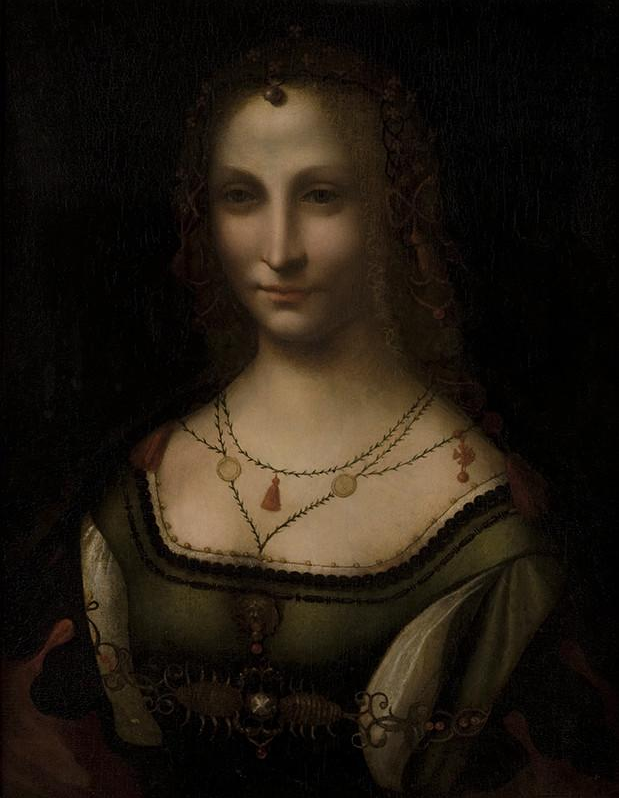
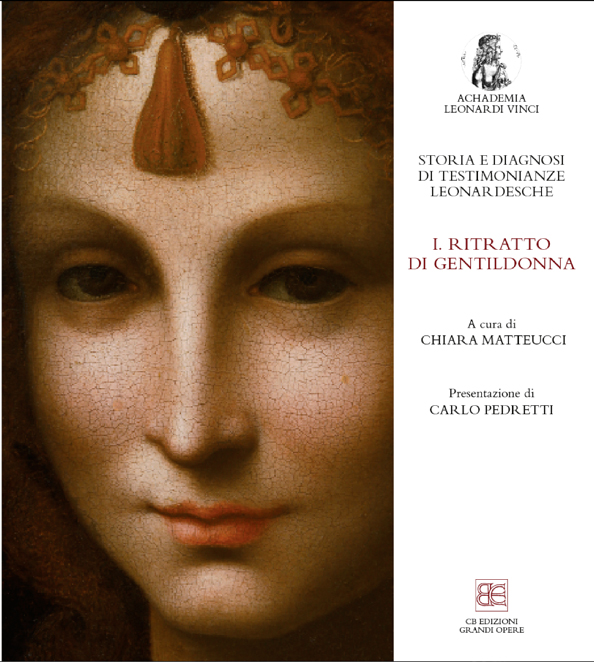
In 1504 a Jacopo Tedesco, in 1505 a Lorenzo (di Marcho) enter the orbit of Leonardo.
In around 1505 Fernando Yáñez enters the orbit of Leonardo, helping him with the Battle of Anghiari (as also does Riccio della Porta). Yáñez cannot be the author of the Prado Mona Lisa, if the Louvre Mona Lisa was finished only years later, since the dates (showing that Yáñez was active in Spain after 1506) do not allow to postulate it. In works of Yáñez done in Spain, however, we find echoes of Leonardo’s works (see the example below).
Around 1507 Francesco Melzi becomes a pupil of Leonardo (and also a sort of secretary).
In 1511 (or even earlier) Giampietrino is an autonomous master.
In 1511 Salaì seems to have created a (signed and dated) picture of Christ:
In around 1511 we see Marco, Boltraffio, Giampietrino and – Giovanni Agostino da Lodi in close contact, not only because we have a source indicating exactly that – we also have pictures indicating exactly that, and one of these pictures seems to be even dated (but the ›date‹ – ›XII‹ – is rather referring to the ›age of Christ‹):
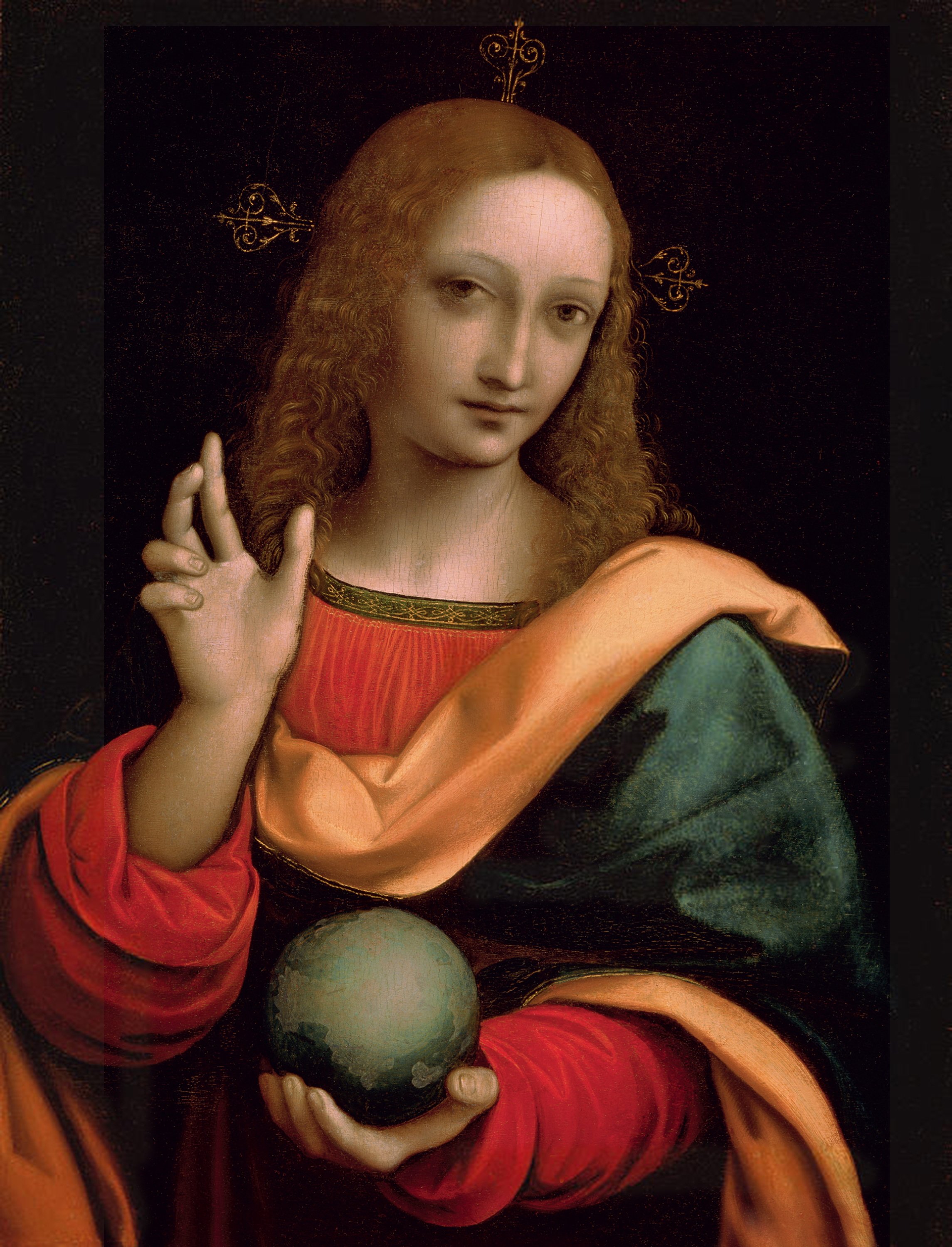
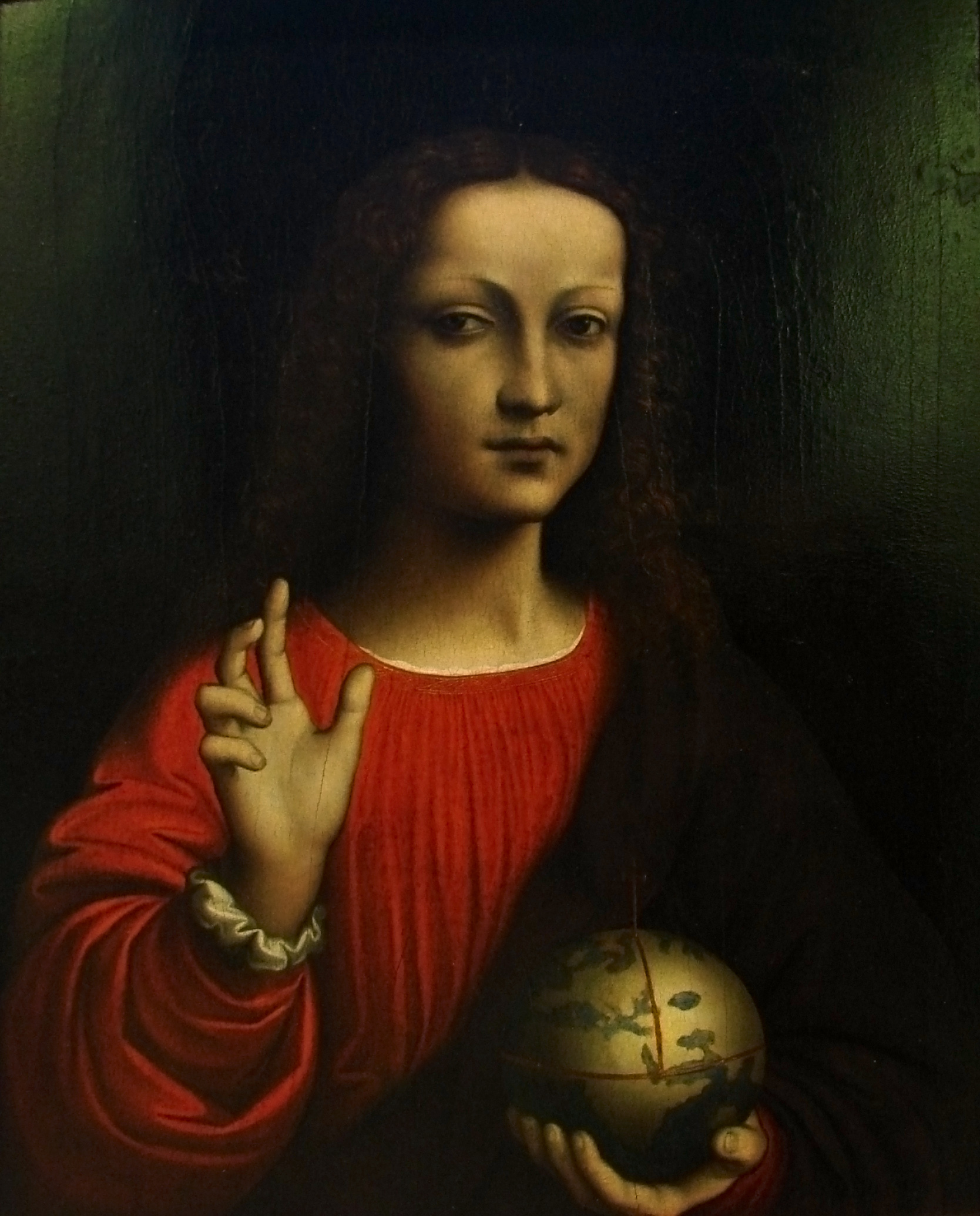
The Prado Mona Lisa (below) was probably begun at the time Leonardo also started reworking or completing the Louvre Mona Lisa, probably due to Giuliano de’ Medici wishing so, and hence perhaps in around 1511/12.
In around 1517 Marco d’Oggiono is cooperating with Giovanni Agostino da Lodi (see Shell, p. 173).
***
1516: Paolo Emilio, Italian-born humanist at the court of Francis I, publishes the first four books of his history of the Franks; death of Boltraffio.
1517: Leonardo da Vinci, with Boltraffio and Salaì, has come to France (picture of Clos Lucé: Manfred Heyde); 10.10.2017: Antonio de Beatis at Clos Lucé
1517ff: Age of the Reformation; apocalyptic moods; Marguerite of Navarre, sister of Francis I, will be sympathizing with the reform movement; her daughter Jeanne d’Albret, mother of future king Henry IV, is going to become a Calvinist leader.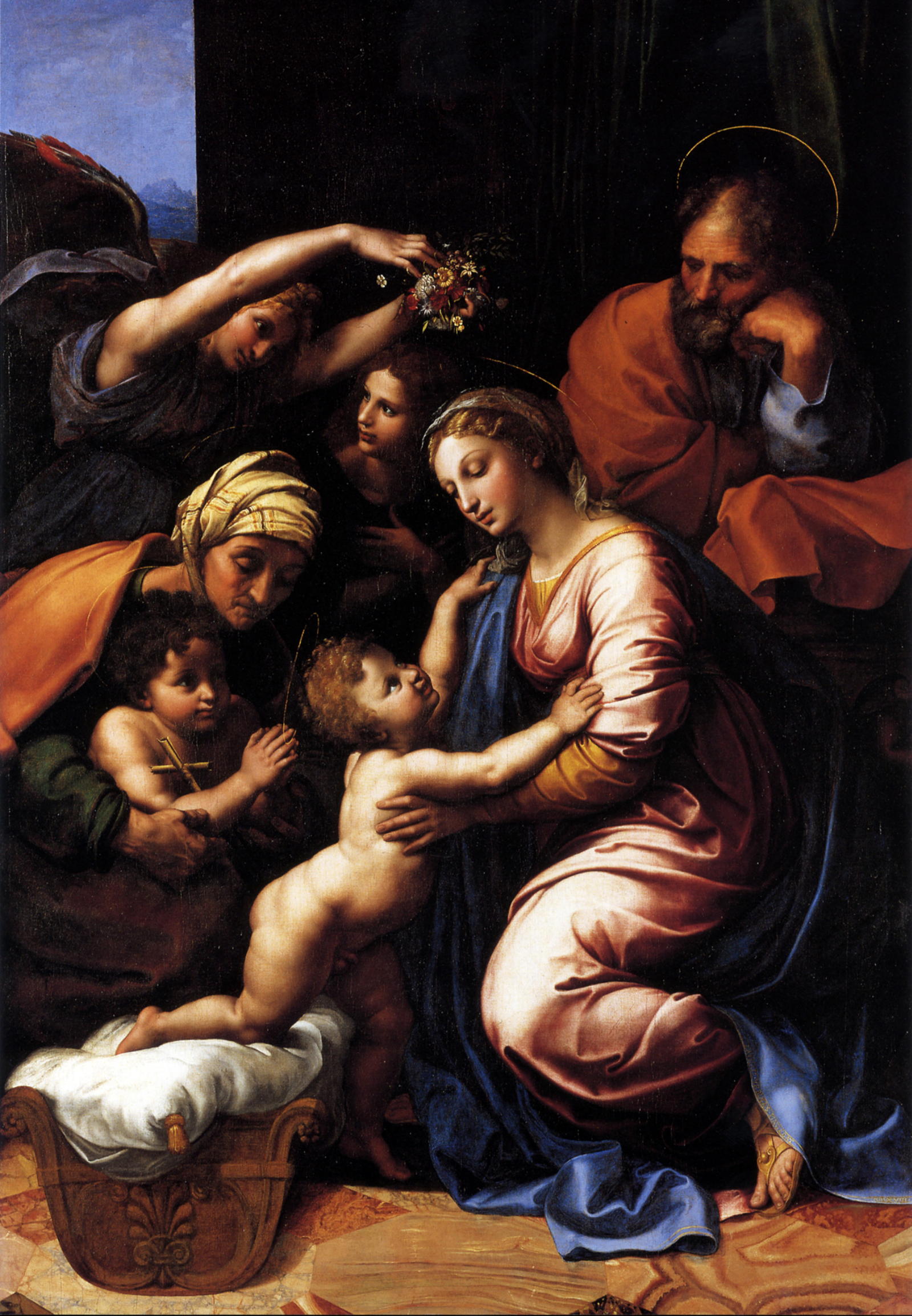
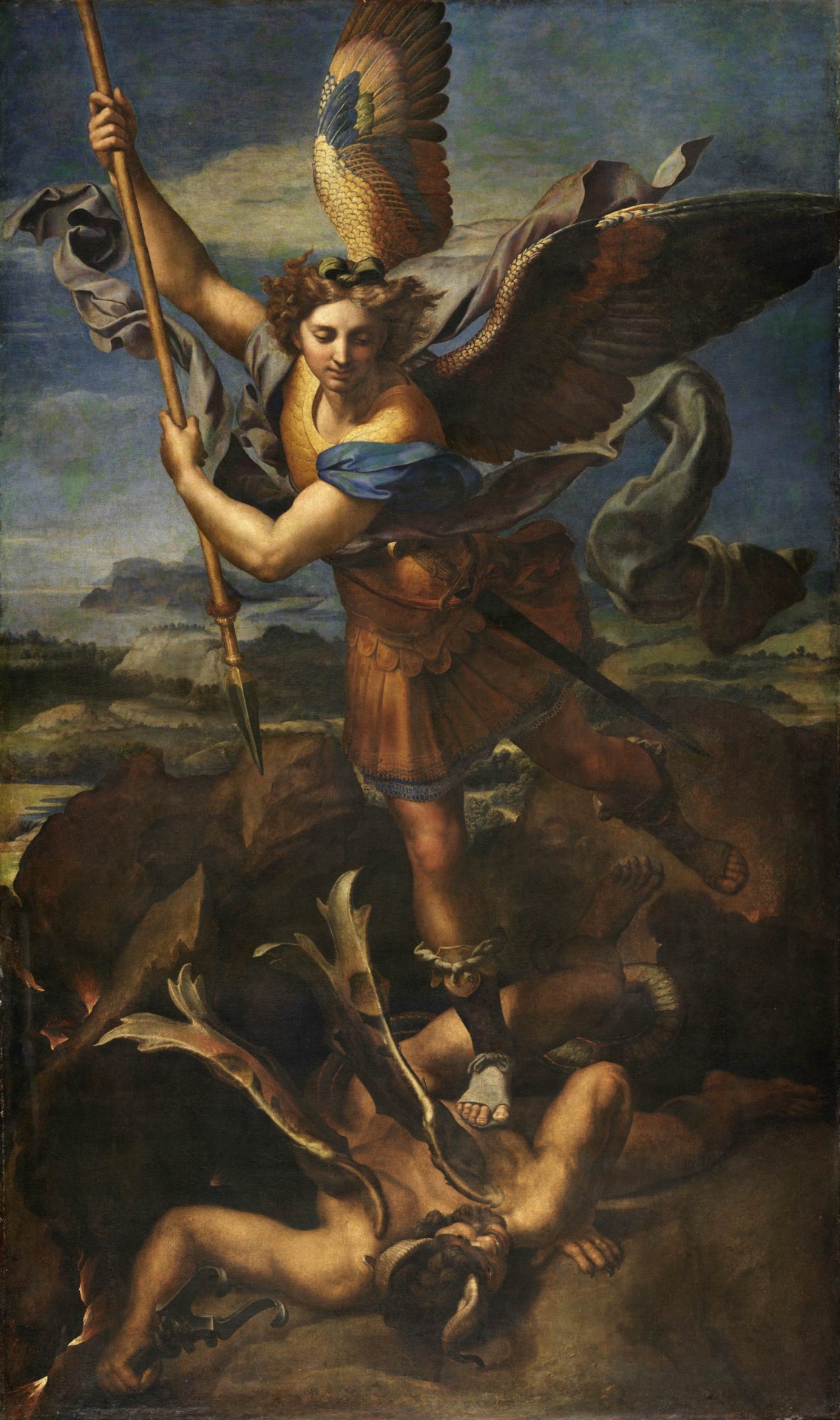
1518: the Raphael workshop produces/chooses paintings to be sent to France; 28.2.: the Dauphin is born; 13.6.: a Milanese document refers to Salaì and the French king Francis I, having been in touch as to a transaction involving very expensive paintings: one does assume that prior to this date Francis I had acquired originals by Leonardo da Vinci; 19.6.: to thank his royal hosts Leonardo organizes a festivity at Clos Lucé.
1519: death of emperor Maximilian I; Paolo Emilio publishes two further books of his history of the Franks; death of Leonardo da Vinci; Francis I is striving for the imperial crown, but in vain; Louise of Savoy comments upon the election of Charles, duke of Burgundy, who thus is becoming emperor Charles V (painting by Rubens).
1521: Francis I, who will be at war with Hapsburg 1526-29, 1536-38 and 1542-44, is virtually bancrupt.
1523: death of Cesare da Sesto.
1524: 19.1.: death of Salaì after a brawl with French soldiers at Milan.
1525: 23./24.2.: desaster of Francis I at Pavia. 21.4.1525: date of a post-mortem inventory of Salaì’s belongings.
1528: Marguerite of Navarre gives birth to Jeanne d’Albret (1528-1572) who, in 1553, will give birth to Henry, future French king Henry IV.
1530: Francis I marries a sister of emperor Charles V.
1531: death of Louise of Savoy; the plague at Fontainebleau.
1534: Affair of the Placards.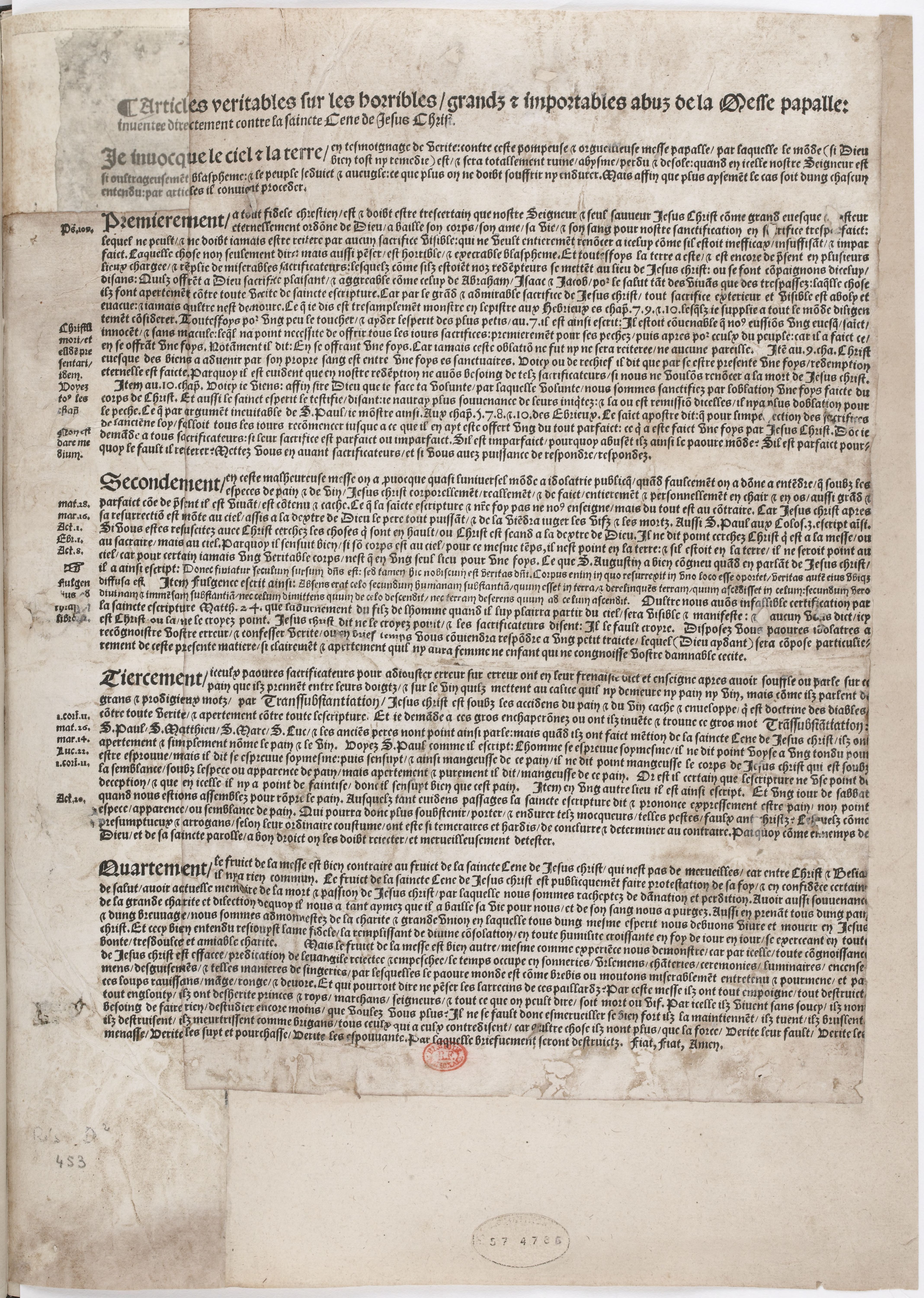
1539: the still unfinished chateau of Chambord is being shown by Francis I to Charles V.
1540s: the picture collection of Francis I being arranged at Fontainebleau.
1544: January: Marguerite of Navarre sends a letter of appreciation to her brother, king Francis I., who has sent her a crucifix, accompanied by a ballade, as a new year’s gift.
1547: death of Francis I.
1549: death of Marguerite de Navarre; death of Giampietrino.
1553: Jeanne d’Albret gives birth to Henry, the future French king Henry IV and first Bourbon king after the rule of the House of Valois.
1559: publication of the Heptaméron by Marguerite de Navarre.
1562-1598: French Wars of Religion.
1570: death of Francesco Melzi.
1589: Henry, grandson of Marguerite de Navarre and grand-grandson of Louise of Savoy, but by paternal descent a Bourbon, is becoming French king as Henry IV.
2015: an exhibition at the Château of Loches is dedicated to the 1539 meeting of king and emperor (see here).

»…in the evening at twenty-two o’clock we saw the Holy Sindon or Shroud«, Antonio de Beatis is writing in his travel account, his trip across Germany, France, the Netherlands and Northern Italy having enabled him to recall, as an eye witness, essential sights of the visual culture of Europe in 1517/18. These sights included, as said above, the Ghent Altarpiece, the Turin Shroud and also Leonardo da Vinci’s Last Supper at Santa Maria delle Grazie, Milan (picture of the Turin Shroud: Dianelos Georgoudis). Only the now so-called Turin Shroud, however, did apparently stimulate him to include a visual reproduction, a drawing, into the manuscript copies of his account.![]()
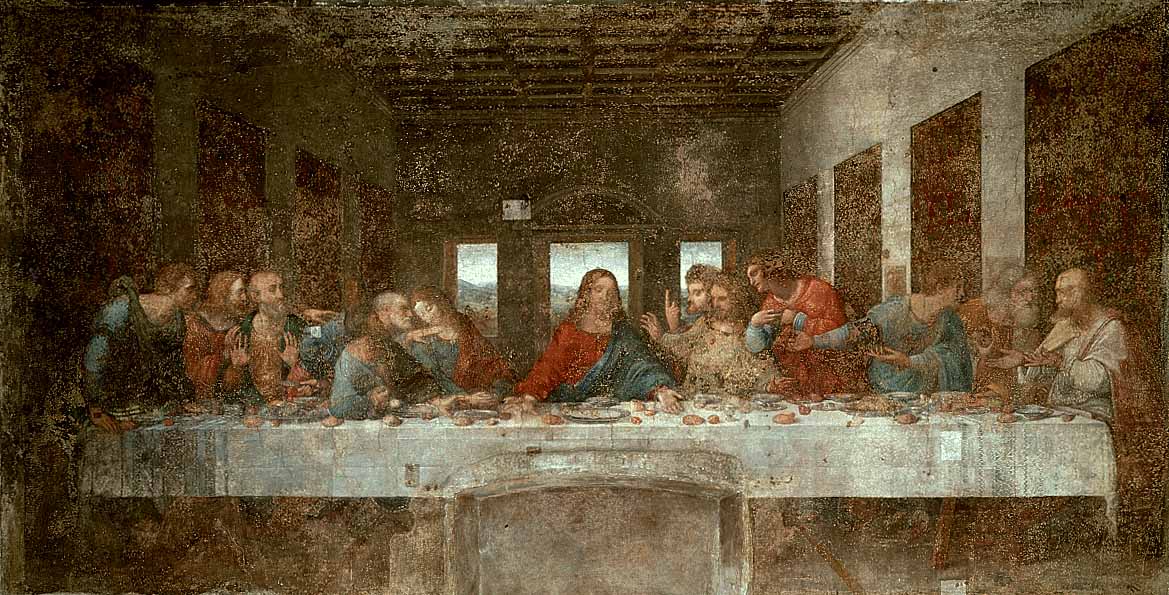
See also the episodes 1 to 23 of our New Salvator Mundi History:
Francis I and the Crown of Charlemagne
The Chronicles of Santa Maria delle Grazie
A Brief History of Digital Restoring
Learning to See in Spanish Milan
And:
MICROSTORY OF ART
ONLINE JOURNAL FOR ART, CONNOISSEURSHIP AND CULTURAL JOURNALISM
HOME
© DS